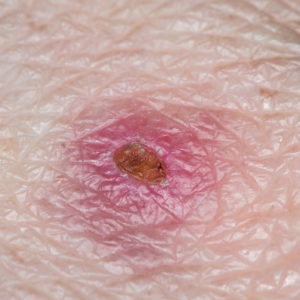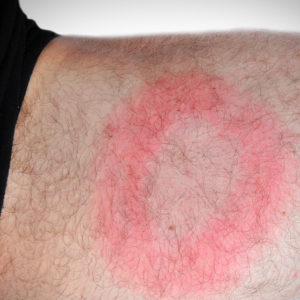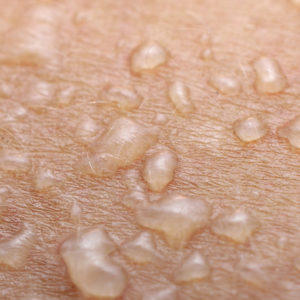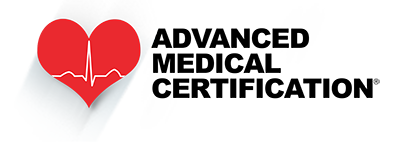Environmental Injury and Illnesses
Playlist includes 6 training videos
Outdoor adventures are gaining popularity, but because of specific factors related to the environment, this often leads to illness and injury that require first aid care.
Bites and Stings
Arachnid bites and stings are common and annoying occurrences. The potential for a serious allergic reaction to these bites does exist, even though most bites are minor in nature.
You must immediately contact 911/EMS if any signs or symptoms of a severe allergic reaction show up.
Local reactions are more common, though more serious systemic reactions are occasionally caused by bites and stings from fire ants, scorpions, spiders, and other insects (Figure 12a).

Figure 12a
Signs that suggest a more serious reaction:
- Decreased responsiveness
- Muscle rigidity
- Abdominal pain
- Nausea or vomiting
- Headache
- Severe pain at the site
- Troubled breathing
Severe abdominal pain that mimics appendicitis in children may occur after they have been bitten by a black widow spider.
Up to one month after exposure to ticks (which carry a variety of diseases), one must be vigilant for symptoms and signs of disease. Skin rash, joint pain, headache, and fever are some of the signs of a tick-borne disease. Use tweezers to grasp a tick by the head and pull it straight out to remove it. Then use an alcohol swab or soap and water to clean the area. Medical treatment must be sought for possible prophylactic antibiotic therapy if the tick bite happened in a location where tick-borne diseases are known to occur.

Figure 12b
Seek medical treatment when dealing with the distinctive “bull’s eye” (Figure 12b). caused by Lyme disease.
A bee stinger can be removed by scraping it away. Apply ice to the area after washing it with cold water, then keep observing for at least 30 minutes, as there is sometimes a delay in allergic reactions.
A high risk of rabies can come from a bite from a coyote, fox, skunk, bat, or raccoon. Before giving first aid to an animal bite victim, ensure that the scene is safe. If possible, the animal should be captured by an animal control officer to determine the chances of rabies. Use soap and water to clean the area, and then apply direct pressure to stop any bleeding. Animal bites are prone to infection. Further injury can be caused by the puncture nature of the wound. If the bite breaks the skin, or if you are concerned about infection or rabies, seek a qualified health care professional immediately.
Medical attention must always be given to snakebites. You can tell that a venomous snakebite has occurred if there have been systemic signs (nausea and vomiting), bruising, swelling, or worsening pain. Do not delay medical attention; call 911/EMS as soon as you can. Ensure that the scene is safe and the snake is gone. Do not move the area that was bitten and keep the person calm. The affected area should be stripped of tight jewelry or clothing. If available, use soap and water to wash the affected area gently. Never apply a tourniquet, and wait for the hospital setting to receive additional care.
Temperature Related Illnesses
Temperature extremes and vigorous exercise can cause heat-related illnesses, especially in the elderly. Heatstroke, heat exhaustion, and heat cramps are just a few of these illnesses.
The stomach, the back, and the extremities may experience painful muscle spasms as a result of heat cramps. The cramps may also be accompanied by headaches and sweating. Drinking a sports drink or a similar electrolyte solution, drinking water, cooling off, and resting are some ways to resolve these symptoms. It is also helpful to have a massage and do light stretching.
Lightheadedness, increased sweating, muscle cramps, vomiting, and dizziness are signs of heat exhaustion, which is a more serious condition.
If possible, move the person to a cooler environment immediately. Remove as much clothing from the person as you can and have the person lie down. If possible, fan the person and spray them with cool water. An alternative would be applying a cool, damp cloth. Give the person a sports drink or water, and stay with them until the arrival of the emergency medical response.
Immediate action is required, as heatstroke can be life-threatening. Vomiting, seizures, muscle cramps, dizziness, loss of consciousness, and confusion are some signs of heatstroke. Call 911/EMS immediately if a person is believed to be experiencing heatstroke.
Do the following immediately when treating a person with heatstroke:
- Assess the safety of the scene, put on protective equipment, and obtain the AED and first aid kit.
- Cool the person with a fan and a spray bottle of cold water or a cool, damp cloth. Immerse them in a cool bath or shower if available.
- Give them a sports drink, an electrolyte solution, or water.
- Until advanced help arrives or the person’s behavior once again becomes normal, keep cooling the person.

Figure 13
Sunburn
Sunburn is caused by exposure to UV radiation from sunlight. This condition can range anywhere from minor reddening to sloughing and blistering of the skin. Avoid excess exposure to the sun at all costs, use sunscreen regularly, and drink extra fluids to remain hydrated. Symptomatic relief can be provided by topical aloe vera. Ibuprofen can also alleviate some discomfort if the person is not allergic.
Frostbite
Most commonly experienced in extremities
like the fingers, toes, nose, and ears, frostbite
is a result of exposure to cold. The risk of frostbite is increased by wind chill. Ice crystals form in the tissues, destroying cells and causing permanent damage in the worst and most severe cases of frostbite, turning the skin waxy and yellow-gray or white. Feeling like a block of wood, the area will be extremely numb and cold, as the tissue cannot be compressed or moved easily when squeezed; it will be firm.
Do the following to provide first aid for frostbite:
- Warm the person and get the person to a warm place.
- Call 911/EMS.
- Clear the affected body part by removing all constricting clothing and jewelry around it.
- Wet clothing must be stripped.
- Cover with a heavy blanket after redressing the person in warm and dry clothing.
- Put the areas affected by frostbite in warm—not hot—water (the temperature should be comfortable to the touch for unaffected parts of the body).
You risk increasing tissue damage by slapping, squeezing, or rubbing the affected extremity. If there is still a risk of refreezing, do not yet rewarm the frozen extremity; instead, wait for a health care professional.
Hypothermia
When the body temperature falls to a dangerously low level, the life-threatening condition known as hypothermia can develop; even in non-freezing temperatures, hypothermia can occur.
Signs and symptoms of hypothermia are:
- Decreased respiratory effort
- Muscle stiffness
- Cold skin
- Shivering (this stops, however, when hypothermia worsens)
- Behavior change (lethargy and confusion)
- Paradoxical undressing
- Progression to unresponsiveness and death
To care for a hypothermic person, rapid action is crucial.
Call 911/EMS immediately and perform the following acts:
- Get the cold person into a warm environment.
- Dry the person and strip off any wet clothing.
- Apply warm and dry clothing, then cover the person with a thick blanket.
- The head is a source of significant heat loss and must therefore be covered.
- Prepare yourself for the possibility of performing CPR, and wait until the arrival of advanced help.
Toxin and Poison Exposure
The scope of this handbook cannot cover the entire list of toxins and potential poison exposures, which is extensive. However, this handbook includes basic concepts for first aid providers that are universally applicable.
In places where chemicals are in regular use, such as businesses and institutions, the availability of a material safety data sheet (MSDS) for each substance is required. These data sheets are useful when contacting poison control and for keeping information about various chemicals and their compositions accessible.
Do the following to provide first aid in situations involving chemicals:
- Call 911/EMS.
- Assess the scene’s safety and put on personal protective equipment.
- Get the AED and the first aid kit.
- If chemicals are involved, tell the dispatcher what these chemicals are.
- Seek a well-ventilated area if possible and remove the person from the toxin or poison.
- If present, remove saturated clothing.
- Follow the 911/EMS dispatcher’s recommendations or the MSDS sheet’s recommendations.
- Wait until the arrival of advanced help.
- If possible, use a mask when performing CPR.
Flush the eyes with copious amounts of water while treating any toxin or poison exposures. Permanent vision impairments or loss of vision may be caused by particularly caustic chemicals like acids and alkaline solutions.
